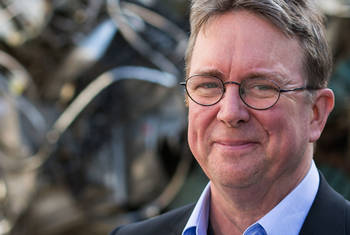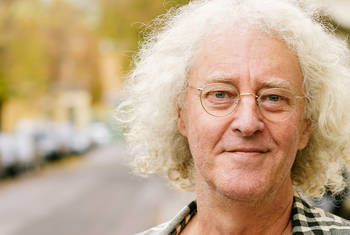Katharina Kitzinger What Role Do Microorganisms Play in the Marine Nitrogen Cycle?
Katharina Kitzinger is a postdoctoral researcher in the Department of Biogeochemistry at the Max Planck Institute for Marine Microbiology. With research interests including nitrification, microbial ecology and biogeochemistry, Kitzinger’s current project is entitled ‘In-situ growth and activity of aerobic and anaerobic nitrifiers in the ocean’. Kitzinger has completed field work in Italy, Peru and the Gulf of Mexico.
Area of Research
Microbiology
since 2019
Postdoc
Max Planck Institute for Marine Microbiology (more details)
Topic: In-situ Growth and Activity of Aerobic and Anaerobic Nitrifiers in the Ocean
2019-2019
Fieldwork
IMARPE Lima, Peru
2016-2016
Research Cruise
Louisiana Universities Marine Consortium
R/V Pelican PE17-02
2015-2019
Fieldwork
Hydra Research Station Elba, Italy
2014-2016
Tutor
University of Vienna
Practical Course on Fluorescence in situ Hybridizationcal
2011-2012
Tutor
University of Vienna
Course: Applied Chemistry
2015-2019
Ph.D.
Max Planck Institute for Marine Microbiology, University of Bremen and University of Vienna (Joint Ph.D.)
2012-2015
Master of Molecular Microbiology
University of Vienna
Theses “Microdiversity and Physiology of Nitrifiers”
2012-2013
Internship
University of Bergen
2009-2012
Bachelor of Biology
University of Vienna
Prizes
- ISME Conference Travel Award Montreal, Canada (2016)
- Briese Award for Marine Research (2019)
- Performance scholarship University of Vienna (2010-2014)

Max Planck Institute for Marine Microbiology
BremenAt the Max Planck Institute for Marine Microbiology (MPIMM), we are investigating microorganisms in the sea and other waters. What role do they play, what are their characteristics and how great is their biodiversity? What is the contribution of microorganisms to the global cycles of carbon, nitrogen, sulfur and iron? What does this mean for our environment and our climate? These and many other questions will be answered by researchers from around the world, engineers, technicians and numerous others at the MPIMM. Their fields of expertise range from microbiology to microsensors, geochemistry to genome analysis and molecular ecology to modelling.
The MPIMM was founded in 1992 and is part of the Max Planck Society (MPG). Since 2002, the MPIMM has been running the International Max Planck Research School of Marine Microbiology (MarMic), a program for highly qualified master students and graduates of our institute and the Bremen Research Alliance partner Bremen University, Alfred Wegener Institute Helmholtz Center for Polar and Marine Research (AWI) and Jacobs University.
Map
What happens in the marine nitrogen cycle? In this video, KATHARINA KITZINGER explains that nitrification as carried out by marine microorganisms involves two distinct processes, with ammonia oxidation resulting in nitrite which is then transformed to nitrate via nitrite oxidation. Using stable isotopes to assess the abundance and activity of the microorganisms that catalyze these two processes, Kitzinger observes that though they are much less common than ammonia oxidizing archaea (AOA), nitrite oxidation bacteria are much more efficient in translating energy from nitrite oxidation to biomass growth. With the research moving from shallow coastal waters to the open ocean, further insights are expected into the striking levels of microbial versatility that have been observed thus far.
LT Video Publication DOI: https://doi.org/10.21036/LTPUB10816
Cyanate and Urea are Substrates for Nitrification by Thaumarchaeota in the Marine Environment
- Katharina Kitzinger, Cory C. Padilla, Hannah K. Marchant, Philipp F. Hach, Craig W. Herbold, Abiel T. Kidane, Martin Könneke, Sten Littmann, Maria Mooshammer, Jutta Niggemann, Sandra Petrov, Andreas Richter, Frank J. Stewart et al
- Nature microbiology
- Published in 2019
Single Cell Analyses Reveal Contrasting Life Strategies of the Two Main Nitrifiers in the Ocean
- Katharina Kitzinger, Hannah K. Marchant, Laura A. Bristow, Craig W. Herbold, Cory C. Padilla, Abiel T. Kidane, Sten Littmann, Holger Daims, Petra Pjevac, Frank J. Stewart, Michael Wagner and Marcel M. M. Kuypers
- Nature communications
- Published in 2020








